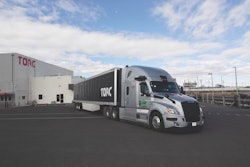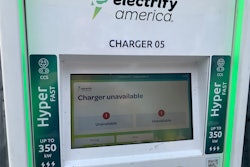The transportation industry is shifting from internal combustion engine (ICE) to electric propulsion, and manufacturers of commercial and specialty vehicles are busy developing and launching their EV platforms. In doing so, manufacturers face substantial new engineering challenges since the demands of higher duty-cycles and load requirements of commercial vehicles cannot be met with EV technology that is simply scaled up from passenger vehicles. Instead, they must invest in the development of advanced, purpose-built technologies that can support the needs of commercial vehicles of all sizes and duty cycles.
Several electric vehicle components present particularly vexing design challenges due to the heat they produce. Commercial vehicles, which have larger carrying capacity, higher torque requirements, and longer operating periods, require particular attention to thermal management technology for battery packs and power electronics. Although thermal management may not be the most apparent innovation, it is a critical frontier in EV transportation because it significantly impacts the longevity, performance and safety of all-electric vehicles.
Temperature extremes can degrade performance and battery life, as anyone who has left a smartphone in the sun can attest, and lithium-ion batteries in modern EVs are (basically) larger versions of those found in personal electronics. Questions about the impact of temperature on efficiency, range, and reliability are, therefore, entirely justified.
Understanding how commercial EVs perform in higher temperatures – particularly compared to their ICE cousins – is essential for fleet operators particularly during the hotter months of summer. Thankfully, thermal management technology for motor vehicle applications is based on well-established science and manufacturing practices.
Out of the ICE Age: Modern Thermal Management
State-of-the-art heat removal technology designed to keep engines cool is built on more than a century of innovation. Today, the most advanced technologies and methods in thermal management, including integrated refrigeration and heating circuits, thermal sensor networks, and sophisticated control algorithms, make high-fidelity temperature control for EV components possible in even the most severe environments.The purpose of the thermal management system in ICE or electric commercial vehicles is to maintain the powertrain components within their optimal temperature ranges. If any component operates continuously outside these ranges, the consequences range from reduced performance to reduced lifespan or, in the worst cases, component failure. Both ICE and EV systems are less efficient in extreme cold or hot temperatures. In colder weather, a well-designed thermal management system can rapidly and efficiently warm components to their ideal temperature ranges. Conversely, in hot weather, the thermal management system must keep components within their optimal temperature ranges by removing waste heat into the environment to prevent damage.
In EVs, the primary heat loads come from the battery pack, including charging and discharging, and power electronics like traction motors, inverters, converters, and onboard chargers. One of the advantages of electric powertrains is that they are more efficient and produce significantly less heat than their internal combustion counterparts, with less wasted energy converted into heat. Since most EV power electronics function best between 30° to 145° C, and lithium-ion battery packs require an even narrower range between 25° to 35° C, the cooling thereof calls for more advanced thermal management systems.
Active cooling in summer
Electrons, not unlike humans, become less efficient in the peak of summer heat. High temperatures cause battery systems to be less productive because the chemical reactions speed up, and the battery pack discharges more rapidly. Over time, overexposure to high temperatures causes battery cell degradation, resulting in loss of capacity and power. Some market segments, like heavy-duty earth movers, are particularly vulnerable to the impact of high temperatures. Such machines call for a ruggedized, purpose-built thermal management system that can be fitted within the chassis design to keep up with the heat removal required during extreme workload phases.A commercial EV thermal management system will maximize performance by using both active and passive cooling loops, in addition to heating loops for cold weather conditions. The passive loop is used when the ambient temperature is lower than that of the battery pack. An array of fans is then used to increase airflow through the radiator and to reject heat from the coolant loop. A passive loop uses less power, which makes the battery thermal management system (BTMS) more efficient, and can improve vehicle range. Thermal management systems for EV power electronics may only require passive cooling, relying on ambient air to cool components.
However, during the heat of summer, the BTMS uses the active cooling loop, where heat is transferred from the battery pack coolant to the BTMS refrigerant through a chiller. Such a refrigeration circuit includes a compressor for cooling and uses about twice the amount of power during operation compared to passive cooling. High duty-cycle, rugged environment, or heavy-duty application commercial EVs require both types of cooling. These systems switch between cooling loops automatically to maintain the optimal balance between power draw and vehicle performance, safety, and component longevity.
Given the advancement and sophistication of cooling technology, concerns about battery and EV component temperature belong in the past. Looking forward, reductions in both cost and carbon footprint through further thermal management optimization is possible, delivering plenty of additional upside for commercial vehicle electrification. As fleet operators make the switch, they can do so with confidence knowing that thermal management technology will keep up with the most punishing demands and operating environments in which they deploy their EV workhorses.









